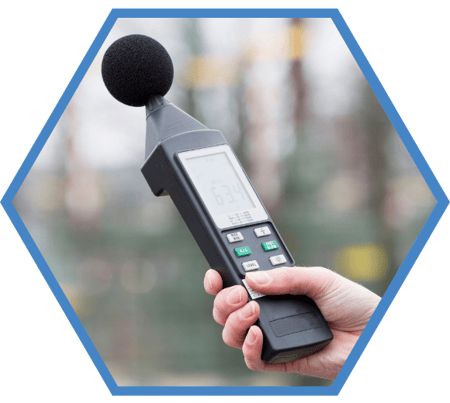NOISE MEASUREMENTS
Administrative Controls
To manage workers' exposure to noise

By Hany Ghonaim | Founder at ODYO
When technical solutions to reduce noise at source are in place, but noise levels remain high, it is important to consider administrative controls in an attempt to manage noise exposure. Administrative measures can include a variety of strategies, such as:
- Job scheduling, which involves scheduling noisy tasks at times when fewer workers are present, or at times when noise impact is minimized.
- Job rotation, enabling workers to avoid continuous exposure to high noise levels, by alternating tasks between different people to reduce individual exposure time.
- Limiting people's entry to excessively noisy areas, restricting access only to those whose presence is absolutely necessary, to minimize the number of people exposed.
- Changing the location or surroundings of equipment to restrict access, by reorganizing the workspace to move noisy equipment away from areas where workers spend most of their time.
- Observing quiet working practices, which involves training employees to adopt noise-reducing work methods, such as using hand rather than power tools where possible.
Some examples of administrative controls
- A noisy machine could be used only during a secondary shift, when the number of workers in the company is reduced and fewer noise sources are active. In this way, workers' exposure to noise will be reduced.
- During the lunch break, two miners can alternate the use of a newer, less noisy shuttle loader with an older one that has no soundproof cab for the operators. This strategy could reduce daily noise exposure for both workers.
- In a manufacturing company, quiet zones can be created to offer employees a respite from the noise. These spaces can also be used for professional discussions, avoiding the need for workers to remove their hearing protection in noisy areas in order to converse. It should be noted that if these spaces are to be located close to the production line, they must be soundproofed to reduce ambient noise levels.
Limits of administrative measures
The current bisection factor indicates that noise doubles for every 3 dB increase. It is therefore essential to understand that this exponential increase in noise levels can have significant repercussions on workers' hearing health. To mitigate these effects, workers need to spend at least half their working time in less noisy areas away from sources of intense noise to benefit from a 3 dB reduction in exposure. This is why administrative controls, while they can play a role in managing noise exposure, are often insufficient on their own to effectively reduce workers' noise exposure. It is therefore necessary to combine these controls with other measures, such as the use of personal protective equipment and the implementation of noise reduction strategies at source, to ensure a safe working environment.
Do the math
If you're thinking of implementing administrative measures that involve sharing tasks with different noise levels, and would like to make some calculations to estimate noise exposure in a simulated scenario, why not try the CNESST calculator? This handy tool enables you to evaluate the level of daily noise exposure (LEX,8h orLex,8h) and is available on the CNESST website. No matter how many tasks or activities you want to simulate, it's there to help you. Have fun with your calculations!

Evaluate the risk with our noise measurement services for industries
Start your hearing loss prevention program with reliable noise measurements to develop an effective action plan to prevent occupational hearing loss.

-1.png?width=144&height=72&name=BJA%20_%20Logo%20Color%20%20(1)-1.png)
